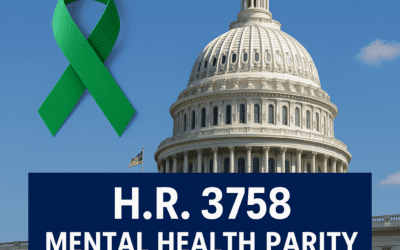Issues regarding pre-existing condition exclusions continue to raise concerns in litigation over disability benefits.
The principal question raised is whether insurers may use hindsight to establish that any doctor visit prior to the commencement of coverage for symptoms that could possibly be related to the later diagnosed disabling impairment would be sufficient to trigger the exclusion.
A recent decision from the 1st U.S. Circuit Court of Appeals, Lavery v. Restoration Hardware Long Term Disability Benefits Plan, 2019 WL 4155038 (1st Cir. Sept. 3, 2019), illustrates the ongoing dispute. There, the plaintiff, John Lavery, sought disability benefits due to malignant melanoma, but benefits were denied when the plan’s insurer, Aetna, asserted that Lavery’s impairment was due to a pre-existing condition and therefore excluded.
The U.S. District Court overturned the benefit denial and the court of appeals affirmed.
The policy defined pre-existing conditions as follows:
“A disease or injury is a pre-existing condition if, during the [three] months before the date you last became covered:
- “it was diagnosed or treated; or
- “services were received for the disease or injury; or
- “you took drugs or medicines prescribed or recommended by a physician for that condition.”
The dispute arose because Lavery had been seen by his primary care physician for a lesion on his back shortly before his coverage began. That doctor thought the lesion might be basal-cell carcinoma and referred Lavery to a dermatologist; however, he provided no treatment and did not prescribe any medications.
It was not until after the effective date of coverage that Lavery saw the dermatologist and was diagnosed with malignant melanoma. Lavery applied for disability benefits shortly thereafter.
Although Aetna’s claim reviewers initially recommended that the claim be approved, the claim was ultimately denied. The appeals court framed the issues as whether Lavery’s primary care physician “diagnosed or treated” the melanoma before coverage began; whether Lavery “received” services “for the” melanoma; or whether he “took drugs or medicine prescribed or recommended” by his primary care doctor “for [the] condition.”
In a prior 1st Circuit ruling, Hughes v. Boston Mutual Life Insurance Co., 26 F.3d 264, 269-70 (1st Cir. 1994), the court recognized that a doctor cannot diagnose, treat or provide anything for a condition if the doctor did not know or believe that such a condition existed.
The court found it was improper to invoke the pre-existing condition exclusion for “any symptom which in hindsight appears to be a manifestation of the [disabling sickness or injury].”
Hughes was decided under the de novo standard of review, though, and the court was able to invoke the doctrine of contra proferentem, which construes policy ambiguities in favor of the insured and against the insurer.
This case differed from Hughes because Aetna had discretionary authority to interpret its policy and its decision could be overturned only if it was deemed arbitrary and capricious.
Following Metropolitan Life Insurance Co. v. Glenn, 554 U.S. 105 (2008), which requires courts to consider an insurer’s structural conflict of interest when it is both the funding source for the benefits and responsible for determining eligibility to receive benefits, the court determined that Aetna’s decision was infected by its conflict.
That court based its finding on its review of the claim file, which suspiciously showed that front-line claim analysts did not believe the exclusion applied, and there was no explanation for why the claim supervisors who rendered the final determinations thought otherwise.
While the court was careful to avoid a conclusion that “the mere fact that a claims reviewer changed her mind suggests a nefarious motive,” the absence of any rationale for the change in position by the supervisory personnel made the determination appear “something of a hunt for a reason to deny Lavery’s claim.”
The court went even further, though. The court rejected Aetna’s argument that Lavery had the burden to show that “he was free from melanoma during the look-back period,” explaining that whether he did or not, the plan’s definition controlled. Since Lavery’s melanoma was not diagnosed, treated or even suspected prior to the onset of coverage, hindsight could not transform his initial doctor visit into a basis for invoking the exclusion.
This case bears similarity to another recently litigated case, Langdon v. Principal Life Insurance Co., 2016 WL 4720025 (N.D. Ill., Sept. 9, 2016). There, an insurer invoked a pre-existing condition exclusion where the insured was seen for complaints of mouth pain prior to the start of his disability coverage. However, it was not until after the coverage went into effect that a CT scan revealed the presence of a cancerous tumor.
Although the cancer may have been present earlier, the court overturned the pre-existing condition denial, relying on Pitcher v. Principal Mutual Life Insurance Co., 93 F.3d 407 (7th Cir. 1996), which held that the plaintiff’s breast cancer treatment could not be excluded as pre-existing despite a doctor’s recommendation during the period immediately prior to the beginning of coverage that the plaintiff obtain a mammogram.
The court found the mammogram order was “more accurately described as either (1) part of [the doctor’s] efforts to evaluate and monitor her fibrocystic breast condition, or (2) a routine diagnostic procedure.” Pitcher, 93 F.3d at 413.
“The fact that a physician orders a routine mammography exam,” the court added, “does not mean that he necessarily suspects cancer in a particular patient, but only that he is practicing sound medicine.” (Emphasis added.)
Another leading decision on this issue is Lawson ex rel. Lawson v. Fortis Insurance Co., 301 F.3d 159, 166 (3d Cir. 2002), which found: “[W]hen the patient exhibits only nonspecific symptoms and neither the patient nor the physician has a particular concern in mind, or when the patient turns out not to have a suspected disease, it is awkward at best to suggest that the patient sought or received treatment for the disease because there is no connection between the treatment or advice received and the sickness.”
Thus, since Lavery was suspected of having a minor, easily treated condition rather than malignant melanoma, the court agreed that Aetna could not apply hindsight to trigger the pre-existing condition exclusion.
‘?? I was involved with the Langdon case cited in this article.
‘?2019 by Law Bulletin Media. Content on this site is protected by the copyright laws of the United States. The copyright laws prohibit any copying, redistributing, or retransmitting of any copyright-protected material. The content is NOT WARRANTED as to quality, accuracy or completeness, but is believed to be accurate at the time of compilation. Websites for other organizations are referenced at this site; however, the Law Bulletin Media does not endorse or imply endorsement as to the content of these websites. By using this site you agree to the Terms, Conditions and Disclaimer. Law Bulletin Media values its customers and has a Privacy Policy for users of this website.
This article was initially published in the Chicago Daily Law Bulletin.






